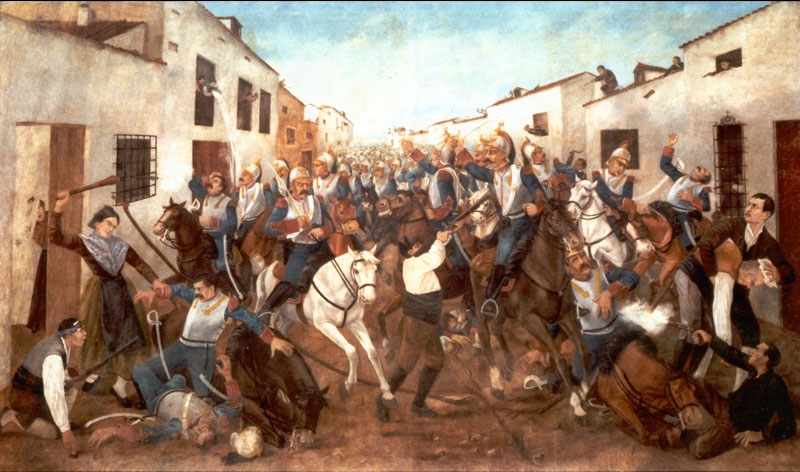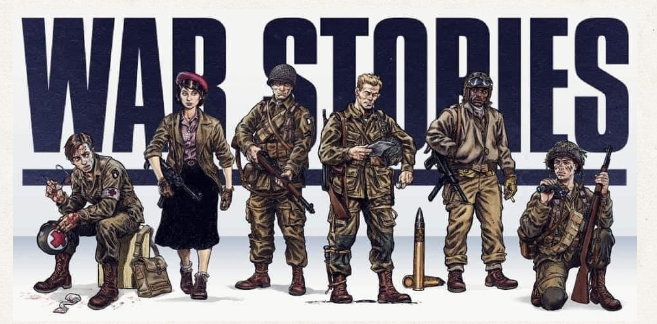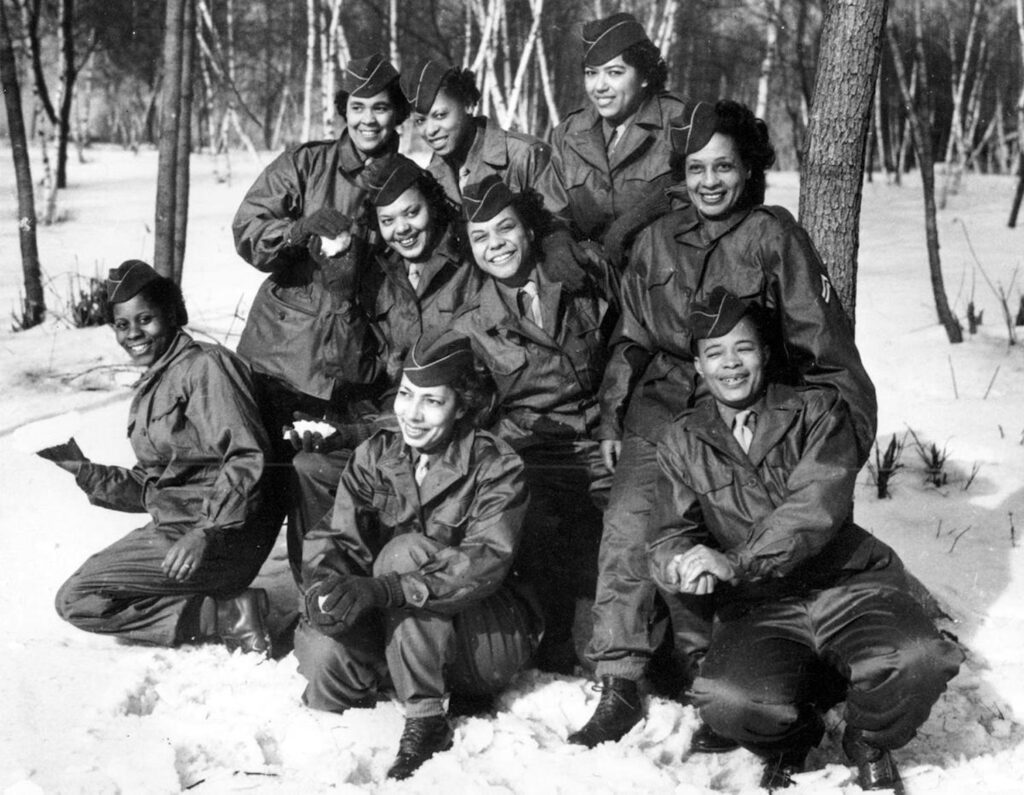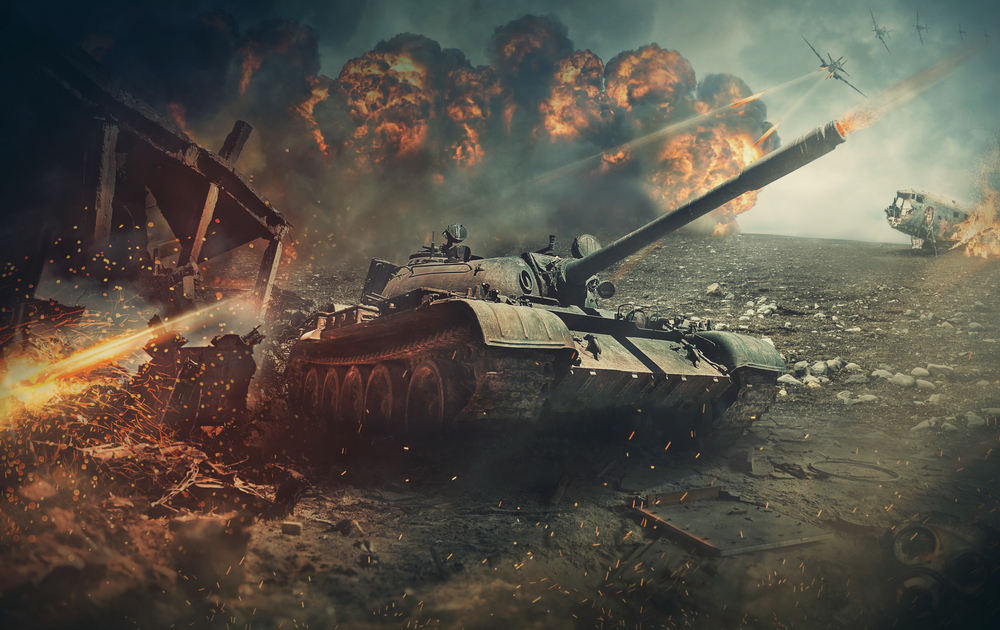The Evolution of Guerrilla Warfare: From Ancient Times to Modern Conflicts

Guerrilla warfare, although often associated with modern conflicts, has its roots deeply embedded in ancient times. From the early tactics of ancient civilizations to the more organized resistance movements in medieval times, the concept of guerrilla warfare has evolved significantly over the centuries.
In ancient times, guerrilla tactics were utilized by various civilizations as a means of combating larger, more conventional armies. The ancient Chinese strategist Sun Tzu famously wrote about the importance of deception, mobility, and surprise in warfare, principles that are fundamental to guerrilla tactics. Similarly, ancient Greek and Roman armies employed guerrilla tactics, such as hit-and-run raids and ambushes, to harass and weaken their enemies.
As societies evolved and warfare became more organized, guerrilla tactics continued to play a significant role. During the Middle Ages, feudal lords and rebellious factions often utilized guerrilla tactics to resist the authority of centralized powers. In Europe, groups such as the Welsh archers and Scottish Highland clans employed guerrilla tactics effectively against larger English armies during periods of conflict.
The Rise of Modern Guerrilla Warfare

The modern concept of guerrilla warfare began to take shape during the colonial era, as European powers expanded their empires and encountered resistance from indigenous populations. One notable example is the tactics employed by Native American tribes during the colonization of North America. Using their knowledge of the terrain and unconventional tactics, Native American warriors were able to inflict significant casualties on European armies.
The 20th century witnessed the widespread adoption of guerrilla tactics by nationalist and revolutionary movements around the world. From the Cuban Revolution led by Fidel Castro to the Vietnam War, guerrilla warfare emerged as a potent strategy for weaker forces to challenge and undermine more powerful adversaries. In these conflicts, guerrilla fighters relied on tactics such as hit-and-run attacks, sabotage, and the use of improvised explosive devices (IEDs) to disrupt enemy operations.
The Influence of Technology
Advancements in technology have both facilitated and challenged the practice of guerrilla warfare in modern conflicts. On one hand, technological innovations such as communication networks and precision-guided weapons have provided guerrilla fighters with new tools and capabilities. For example, insurgent groups in Iraq and Afghanistan have utilized cell phones and the internet to coordinate attacks and disseminate propaganda.
However, technology has also presented challenges for guerrilla fighters, as more advanced surveillance systems and counterinsurgency tactics have made it increasingly difficult to operate covertly. The use of drones and other unmanned aerial vehicles (UAVs) by militaries has allowed for targeted strikes against guerrilla targets with minimal risk to the attacking forces.
Adapting to Modern Challenges
In response to these challenges, guerrilla movements have had to adapt and evolve their tactics to remain effective in the face of technological advancements. This has included a greater emphasis on decentralized command structures, reliance on small, mobile units, and the use of asymmetric warfare tactics to exploit the weaknesses of conventional forces.
Additionally, guerrilla fighters have increasingly turned to unconventional means of warfare, such as cyber-attacks and information warfare, to achieve their objectives. By leveraging the power of social media and other online platforms, insurgent groups can amplify their message and recruit supporters on a global scale.
The Role of Ideology

Ideology has always played a crucial role in shaping the strategies and objectives of guerrilla movements. From the nationalist fervor of anti-colonial movements to the Marxist-Leninist ideology of communist insurgents, the underlying beliefs and principles of guerrilla fighters have often served as a rallying cry and a source of motivation. Ideological frameworks provide guerrilla movements with a sense of purpose and legitimacy, framing their struggle as a righteous cause against oppression and injustice. Enthusiasts and those who really want to know more about all this can rent a car in Beograd and explore Europe’s historic roads and stories, discovering all the interesting things they hide.
In recent decades, however, the influence of ideology on guerrilla warfare has evolved. While traditional ideological movements continue to exist, newer forms of guerrilla warfare have emerged that are less rooted in ideological dogma and more focused on pragmatic objectives. These pragmatic guerrilla movements may lack the ideological fervor of their predecessors but are no less effective in challenging established powers and achieving their goals through unconventional means. Such initiatives and changes in the world around you should inspire you to make certain changes in your life, and you can start with a car that you can upgrade according to your wishes at the transmission service in Buffalo.
The Role of Non-State Actors
The landscape of modern warfare has been reshaped by the emergence of non-state actors as significant players in conflicts around the world. From terrorist organizations like al-Qaeda and ISIS to transnational criminal networks, non-state actors have increasingly utilized guerrilla tactics to advance their agendas and destabilize regions. Unlike traditional state-sponsored guerrilla movements, non-state actors operate with greater flexibility and autonomy, often blurring the lines between warfare, terrorism, and organized crime. With all this in mind, it might not be a bad idea to think carefully about where you would go on vacation and spend your time enjoying swimming in the pleasant sea wearing your comfortable bikini, and sunbathing on the warm beach.
The rise of non-state actors has presented new challenges for conventional military forces and policymakers, who must contend with adversaries that operate outside the norms of traditional warfare. These groups often exploit weak or failed states, taking advantage of porous borders and ungoverned spaces to establish safe havens and launch attacks against their enemies. Combating non-state actors requires a multifaceted approach that addresses not only the military dimension but also the underlying socio-economic and political factors driving their activities. Such topics can be very interesting, especially in conversations with your friends at a social gathering with homemade wine served in luxurious wine glasses.
The Influence of Globalization
Globalization has profoundly impacted the practice of guerrilla warfare, reshaping the dynamics of conflict in an increasingly interconnected world. The flow of ideas, information, and resources across borders has enabled guerrilla movements to garner support and resources from sympathetic actors around the globe. Whether through financial assistance from sympathetic governments or ideological inspiration from like-minded movements, globalization has empowered guerrilla fighters to wage their struggles on a global scale. In various online courses, you can learn more about such topics by informing yourself better in order to understand the essence of such problems.
At the same time, globalization has also exposed guerrilla movements to new vulnerabilities and challenges. Increased international scrutiny and pressure from the global community can limit the ability of guerrilla fighters to operate with impunity, forcing them to adapt their tactics and strategies to avoid detection and capture. Furthermore, globalization has facilitated the spread of counterinsurgency tactics and technologies, allowing state actors to more effectively combat guerrilla movements across borders. Some of the security systems that are also being introduced to various bases, but can also be installed in personal homes and buildings for added protection are definitely access control systems from Philadelphia.
The Role of Information Warfare
In the digital age, information warfare has become an increasingly important aspect of guerrilla warfare tactics. Guerrilla movements leverage the power of social media, online propaganda, and cyberattacks to disseminate their message, recruit supporters, and undermine the legitimacy of their adversaries. By controlling the narrative and shaping public perception, guerrilla fighters can amplify their impact and challenge the dominance of more powerful opponents. It is very important that you look at the bigger picture of what is happening and while you are sitting in your luxurious and spacious house, like are the houses in Boca Falls and scrolling through social networks, pay attention and distinguish what is true from everything.
Information warfare also poses challenges for conventional military forces and governments, who must contend with the spread of misinformation and propaganda from guerrilla movements. In an era of fake news and online manipulation, distinguishing fact from fiction can be difficult, allowing guerrilla fighters to exploit uncertainty and sow confusion among their enemies. Effectively countering information warfare requires a coordinated effort that combines traditional military tactics with strategies for combating disinformation and propaganda. Through organizations such as Readathon school fundraiser, young people can develop an excellent reading hobby and thus become more informed about everything, putting themselves one step ahead of others.
The Role of Economic Warfare
Economic warfare has emerged as a powerful tool in the arsenal of guerrilla movements, enabling them to undermine the stability and legitimacy of their adversaries through non-military means. By targeting key economic infrastructure, such as oil pipelines, transportation networks, and financial institutions, guerrilla fighters can disrupt the flow of goods and capital, weakening the economy and eroding public confidence in the government’s ability to govern effectively. What can suffer greatly during such processes is education, which is why it is very important that young people, with excellent tutors such as the science tutors in Boulder, acquire the necessary knowledge and pass their tests in schools.
One notable example of economic warfare is the use of sabotage and attacks on oil installations by militant groups in regions such as the Niger Delta and the Middle East. By targeting oil production facilities and pipelines, these groups can exert significant pressure on governments and multinational corporations, forcing them to make concessions or face further economic instability. In some cases, economic warfare has been used in conjunction with traditional military tactics to achieve strategic objectives, such as the liberation of territory or the removal of foreign occupiers. Fuel is extremely important in today’s world, and cutting off its supply can cause numerous problems, however, in everyday life with the roadside assistance app you don’t have to worry if you run out of fuel or if something breaks down on the road.
The Role of Climate Change
Climate change is increasingly shaping the landscape of conflict and insurgency around the world, exacerbating existing grievances and creating new sources of instability. As environmental pressures mount and natural resources become scarcer, competition for land, water, and other essential resources is intensifying, leading to conflict and displacement in vulnerable regions. In some cases, guerrilla movements have capitalized on these environmental stresses to recruit supporters and exploit local grievances. Such movements affect the world’s ecological order by influencing everyone to start in its preservation, so individuals can start using new smoking accessories that leave a better impression on the environment as well as on health.
For example, in regions affected by drought and desertification, such as the Sahel region of Africa, guerrilla fighters have exploited competition over scarce resources to recruit disenfranchised youth and marginalized communities. Similarly, in low-lying coastal areas threatened by sea-level rise and extreme weather events, guerrilla movements have capitalized on the vulnerability of local populations to garner support and challenge the authority of central governments. Medical equipment in such situations is also extremely important, says the health clinic in Marietta GA, and can also be a reason for conflict, and if you have any injuries or symptoms, you can contact one of their excellent doctors.
The Role of Hybrid Warfare
Hybrid warfare, a term used to describe the blending of conventional military tactics with non-military means such as propaganda, cyber attacks, and economic coercion, has become increasingly prevalent in modern conflicts. Guerrilla movements have embraced hybrid warfare tactics as a means of challenging more powerful adversaries and exploiting their vulnerabilities. By combining traditional guerrilla tactics with modern technology and asymmetric strategies, guerrilla fighters can achieve their objectives with minimal risk to themselves. Youngsters learn a variety of historical tactics through their excellent homeschooling tutors in Bettendorf to succeed in passing their history tests with the best results.
One example of hybrid warfare is the use of cyber attacks and information warfare by guerrilla movements to disrupt the operations of their adversaries and shape public opinion. By hacking into government networks, spreading disinformation online, and launching coordinated cyber attacks, guerrilla fighters can weaken the resolve of their enemies and undermine their legitimacy. Similarly, economic warfare tactics, such as targeted sanctions and boycotts, can inflict significant economic damage on governments and corporations, forcing them to reconsider their policies and actions. An Internet provider that manages IT services in San Antonio provides its users with an excellent and secure Internet with which they can stay up to date with the happenings of the world and the country so that they know how to behave in the society that surrounds them.
The Role of International Actors

The involvement of international actors in conflicts and insurgencies has become increasingly common in the modern era, reshaping the dynamics of guerrilla warfare and introducing new complexities and challenges. Whether through direct military intervention, financial support, or diplomatic backing, foreign powers can significantly influence the course and outcome of conflicts around the world. In some cases, international actors may seek to support guerrilla movements as a means of advancing their own geopolitical interests or countering rival powers. It is very important to know how to recognize this kind of bad promotion and drag using an already bad political situation, just as it is important to recognize a good advertisement, and if you have a business and a brand that you want more people to know about, contact a Colorado Springs SEO company that will create an excellent promotion plan just for your.
For example, during the Cold War, the Soviet Union and the United States provided support to various guerrilla movements as part of their broader efforts to expand their influence and undermine their adversaries. Similarly, in more recent conflicts such as the Syrian Civil War and the Yemeni Civil War, foreign powers have provided arms, funding, and training to insurgent groups as part of their proxy struggles for regional dominance. This third-party relationship is necessary in various spheres, so if you have a business that you want to expand, look for M&A business advisors who will connect you with excellent companies that can help you achieve your goal.
Conclusion
The evolution of guerrilla warfare from ancient times to the modern era reflects the changing nature of conflict and the complex interplay of political, social, economic, and technological factors shaping the dynamics of warfare. Asymmetric conflicts between state and non-state actors have become increasingly common in the 21st century, driven by ideological, geopolitical, and environmental grievances. If you are interested in finding out more details about such topics, you can rent a car in Beograd and attend one of the European conferences led by impartial organizations, which will certainly give you a new picture of the world we live in.
Successfully navigating these challenges requires a nuanced understanding of the complexities of modern warfare and a willingness to adapt to new realities on the battlefield. Guerrilla fighters must leverage a range of tactics and strategies, from traditional guerrilla warfare tactics to cyber warfare and economic coercion, to achieve their objectives and challenge the dominance of more powerful adversaries. There are several points that such fighters must pay attention to in order to perform a good attack, which is not bad to apply in everyday life, where with some simple checks, such as checking the water for scale that can accumulate in the pipes, we can prevent some accidents such as burst pipes in the apartment. However, if it does happen, you can always call an emergency restoration service in Charlotte that will quickly repair the malfunction.
Ultimately, the future of guerrilla warfare will be shaped by the ongoing evolution of technology, the changing geopolitical landscape, and the emergence of new sources of conflict and instability. By embracing innovation and flexibility, guerrilla fighters can hope to achieve their goals and reshape the course of history in an ever-changing world. How wars used to be different with brave warriors on their horses with traditional saddle blankets to today’s skilled warriors in different spheres, the very science of warfare has changed countless times and the question is what awaits us in the future



